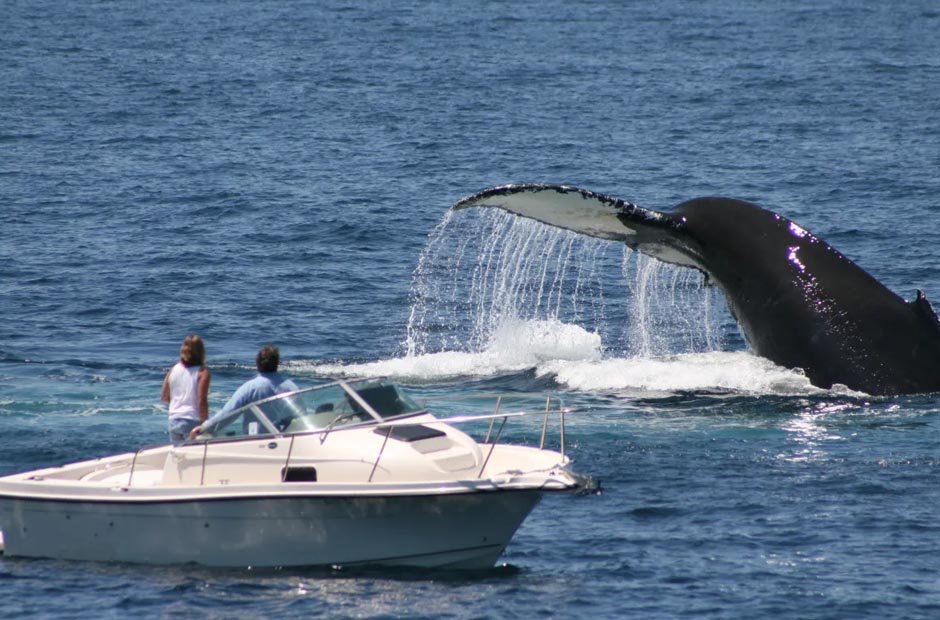The Biden administration has recently proposed a rule that aims to limit boat speeds in order to protect the critically endangered North Atlantic right whale. The rule would impose restrictions on boats longer than 35 feet, limiting their speed to 11 mph for up to seven months a year and up to 100 miles off the East Coast. While the objective of safeguarding the right whale population is commendable, this proposed rule has sparked a contentious debate with potential consequences for boat tourism, coastal businesses, and the livelihoods of many individuals. In this article, we will explore the various perspectives surrounding the proposed boat speed limit and its potential impact.
Concerns of Boat Captains and Business Owners
Coastal towns heavily rely on boat tourism as a significant source of revenue. Boat captains and business owners are concerned that the proposed rule would have a detrimental effect on their livelihoods. According to the Marine Manufacturers Association, this regulation could result in the loss of approximately 340,000 jobs and put $84 billion in boat tourism at risk. These numbers underscore the economic impact that such a rule could have on coastal communities.
Criticism of the Proposed Rule
Critics of the proposed boat speed limit argue that the number of whale strikes involving boats under 65 feet has been remarkably low over the past 15 years. They contend that the chances of a right whale strike are less than one in a million. In light of these statistics, some question the necessity of imposing such stringent speed restrictions on boats, especially considering the potential economic consequences for the recreational boating and fishing industry.
Congressional Response
The proposed rule has garnered attention from both Republican and Democratic members of Congress. Republican Congressman Buddy Carter and Democratic Congresswoman Mary Peltola have jointly introduced a bill that seeks to defund the rule. This bipartisan effort reflects the concerns raised by constituents and aims to address the potential economic impact on ports and commercial fishermen.
Scope and Duration of the Speed Restrictions
The National Oceanic and Atmospheric Administration (NOAA) plans to implement speed restrictions for boats as small as 35 feet and enforce them along almost the entire length of the Atlantic seaboard, spanning from Massachusetts to Florida. These restrictions would be in effect from November 1 to May 30, corresponding to the period when right whales migrate from their summer foraging grounds in the Gulf of Maine to their winter calving grounds in the South Atlantic Bight.
Industry Concerns and Requests for Revisions
The recreational boating industry perceives the proposed regulation as a significant burden that could adversely affect boats, states, and fisheries. Industry representatives argue that the rule would impede efficiency, fuel efficiency, and the ability to maintain schedules. As a result, they request NOAA to pause the rule and consider revisions that would mitigate the potential impact on the recreational industry.
The Fragility of the Right Whale Population
The North Atlantic right whale population is critically endangered, with fewer than 350 individuals remaining, of which only 100 are capable of reproducing. Despite protection from commercial whaling since 1935, the species has not recovered as expected due to human-caused mortality and decreased reproductive output. The urgency of protecting the remaining individuals is clear, but finding a balance between conservation efforts and economic considerations remains a challenge.
Boating Speed Limits and Factors Affecting Boat Speed
Boats typically do not have specific speed limits like land vehicles. However, there are restrictions such as “no-wake zones” designed to prevent boats from creating hazardous waves around other boats, docks, piers, and canals. In open waters such as oceans or seas, there are generally no speed limits for boats.
Various factors can influence boat speed. Hull and bow design play a significant role, as planning hulls and slender bows minimize contact with water, allowing boats to achieve higher speeds. Water depth also affects boat speed, with shallower waters resulting in increased friction and reduced speed due to faster water flow. Water temperature can impact viscosity, leading to higher frictional resistance and decreased boat speed. Additionally, the weight of the boat affects its speed, as heavier boats displace more water and require more power to push through it.
The popular speed range for recreational boats typically falls between 10 to 40 mph, while speed boats, such as cigarette boats and racing boats, can reach much higher speeds of up to 150 to 200 mph. However, boats generally have slower speeds compared to cars due to the denser medium (water) they move through and the need to displace the water efficiently.
Differing Opinions on Economic Impact and Effectiveness
Supporters and critics of the proposed rule have differing opinions on both the economic impact and the effectiveness of speed restrictions. Supporters argue that the preservation of the right whale population is of paramount importance and that the economic consequences are outweighed by the need to protect this critically endangered species. On the other hand, critics emphasize the potential damage to coastal communities and the recreational boating industry, asserting that the proposed rule provides little actual protection to right whales due to the low likelihood of recreational vessels fatally striking them.
Conclusion
The proposed boat speed limit intended to protect the North Atlantic right whale has sparked a heated debate between conservationists and stakeholders in the boating industry. While the objective of safeguarding an endangered species is crucial, the potential economic consequences on coastal communities and the recreational boating industry cannot be overlooked. Striking a balance between conservation efforts and the interests of local businesses and communities is a complex challenge that requires careful consideration. As this proposal continues to be deliberated, it is essential to engage in constructive dialogue and seek solutions that mitigate the impact on both the right whale population and the livelihoods of those dependent on boating tourism.








